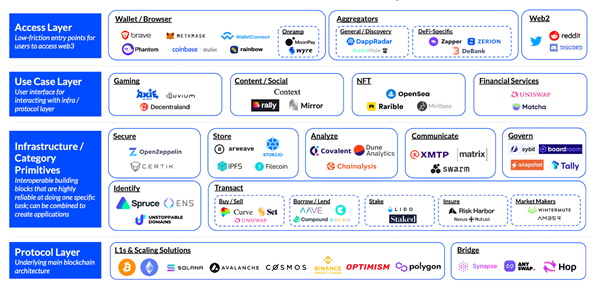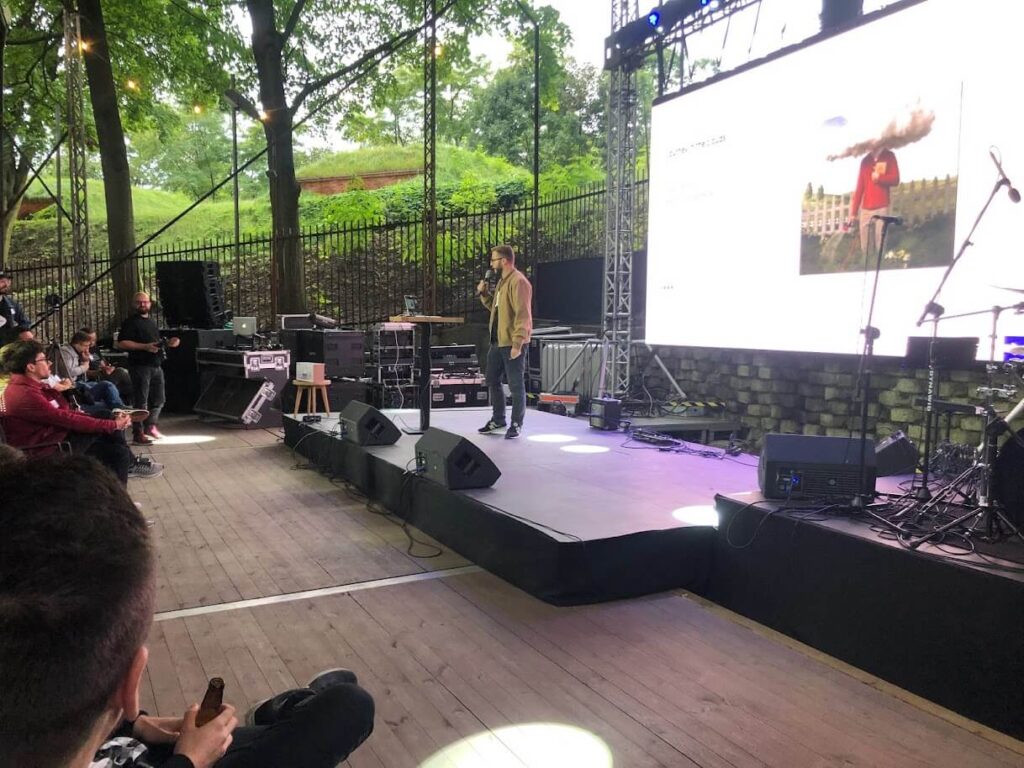Web3 means increasing levels of transparency – an interview with Oliver Snowden
How would you explain what Web3 is to someone who’s never heard the term before?
“Web3” can be quite an emotive word and often means very different things depending on who you talk to.
For me, it is a term used to describe a set of technologies that aspire to be decentralised and uphold many of web inventor, Sir Tim Berners-Lee’s original ideas on decentralisation, non-discrimination, bottom-up design, universality and consensus. It is a set of technologies that decentralises our web services, enables wider participation, improves remuneration, lowers costs and automates many tedious processes. Perhaps “tokenisation of everything” is an appropriate phrase – whether digital or a real-world entity, a digital token will determine ownership, who has access and how much.
What might it mean for you? It might mean that you will be working for algorithms, possibly a Decentralised Autonomous Organisation (DAO), where you can supply your services from anywhere with an Internet connection. Want to supply 5G telephony services? Join the Helium community. Want to supply computer storage? Join the Storj, Sia etc. communities. Want to verify the people’s identities? Join identity.com and participate in the Decentralised Identity Verification ecosystem. Want to influence the direction of those communities? Participate in the governance structures via the community token. It is that simple.
I am so incredibly excited about the possibilities – my university lectures from 20 years ago about autonomous systems and multi-agent systems are becoming a reality and my head is bursting with ideas [Multi-Agent System][Nick Jennings]. The foundations are thanks to the Computer Science breakthrough that the person (or group) using the pseudonym Satoshi Nakamoto published in the Bitcoin Whitepaper on October 31, 2008.
Web2 vs Web3 – what are the main differences?
Broadly speaking, folks simplify the development of the web to:
Web1: Read-only
Web2: Read-write
Web3: Read-write-own
Web2 was largely about efficient, centralised entities (often the FAANGs) developing interactive and collaborative platforms for the masses. Businesses and individuals leveraged those platforms but clearly it gave a handful of tech companies tremendous insight into customer data and an incredible amount of power and influence, which they still hold today. I think we all remember former President Trump bypassing mainstream media and using Twitter directly. Many no doubt also remember the day he was “deplatformed”. Web3 is about decentralising and democratising those web services, enabling community governance and fairer remuneration.
Practically, I see this technology as a means of providing meaningful jobs to people around the world, allowing them to earn money from the digital ecosystems and to undercut Web2 systems.
Take for instance our digital photos – many of us love to store our photos on Google Photos, Flickr, iCloud etc. That convenience comes at a cost and is currently ~$30 for 100GB per year. What happens when normal mobile, PC and games console users are financially rewarded for supplying their free storage space? Surely those users would be happy to earn any amount of money. A slick app that allows them to capitalise on their free storage will push storage prices towards “waste pricing” – the users were using their computers anyway… and receiving any reward is better than nothing. This is what the likes of Storj, Sia, Filecoin and many others are working on. At the time of writing, the equivalent amount of storage on Web3 technology is ~$4 per year but I will be intrigued to know how that changes in time.
Which are the top industries where Web3 is becoming more prominent right now?
To my mind, Web3 has largely been applied to “low hanging fruit” and by that, I mean impactful, relatively straightforward use cases. We have seen attempts to address the major areas of computing with various levels of success. Decentralised CPU/GPU processing, storage, networking and DNS have seen “solutions” with varying levels of success. We have also seen Web3 applied to news, video, social networking, identity, talent, Audio, and Oracles, to name a few.
Now you asked about the areas that are most visible and prominent right now. If you have been following the news you will probably already have a good idea, but because these systems are relatively open and decentralised it is pretty easy to see. By looking at, say, Ethereum Gas Tracker or Eth Gas Station we can see that, at the time of writing, essentially all of the top “gas guzzlers” on Ethereum are either Non-Fungible Token (NFT) or Decentralised finance (DeFi) systems. We can see they are extremely popular given that in the past 30 days the top 10 systems have spent approximately $170 million in fees alone.
So, NFTs are essentially about providing “one of a kind” tokens, which are stored on Distributed Ledger Technology (DLT). Those tokens can be associated with anything digital or physical but have largely been associated with images, videos and audio.
Why should those tokens have any value? Well, the same reason that the original painting in a museum could have enormous value, but the postcard in the gift store (a copy) only attracts a small amount. People want to record ownership and rights to content, which they can use in digital systems. The token shows that the content is the “original content” and it allows the owner to prove they are the owner. Other digital systems, such as a game, might only permit “original content” to be used (e.g. avatars, in-game characters etc.) and therefore there can be enormous value associated with such tokens. I should point out that whilst this might seem irrelevant to some, Spider-Man NFTs were the primary reason for AMC recording their second-highest one-day ticket sales in their entire history.
As for DeFi, the Ethereum foundation defines this as:
- A global, open alternative to the current financial system.
- Products that let you borrow, save, invest, trade, and more.
- Based on open-source technology that anyone can program with.
Source: Decentralized finance (DeFi)
We can see from sources, such as DeFi Pulse that there is currently approximately $100 billion locked up.
So given that, I’d say that both the “Arts and Recreation Services” and “Financial and Insurance Services” are dominating Web3 at the moment. Whilst I certainly thought finance would be dominant in this space, I have to admit that I was rather taken back by the digital art NFT craze. That said, Hal Finney was thinking of this back in 1993 – to me it goes to show how far ahead of their time such people were.
What are the top technologies used in the Web3 area?
There are some really useful diagrams, such as the Web3 stack created by Coinbase , which provides a great overview.

From a practical perspective:
Protocol level: Ethereum supports ~90% of Web3 applications.
Access layer: the Brave web browser, created by Mozilla co-founder and inventor of Javascript, has seen tremendous growth. It natively integrates crypto wallets, supports IPFS, includes decentralised DNS and rewards users using Basic Attention Token (BAT). Brave currently has ~50 million monthly active users and user growth has more than doubled annually each year since product launch.
Wallet access: Metamask is used by 21 million monthly users to connect their digital value to Web3 websites.
NFT access: OpenSea is marketed as the “world’s first and largest NFT marketplace” with over 600 thousand users and 80 million NFTs attracting vast sums of money. It is supporting “EIP-721: Non-Fungible Token Standard” and “EIP-1155: Multi Token Standard”, which essentially simplifies the whole process of creating an NFT.
DeFi: the Uniswap protocol is a leading way to swap, earn and build on their crypto trading protocol without intermediaries. It is built on Ethereum’s blockchain technology and consequently much of it was written using Solidity, which is typically accessed via relatively standard web technology. The Uniswap V3 SDK, for instance, is written in TypeScript.
So, whilst the above might give the impression that Web3 technology is “good to go”, I would like to caution that much of Web3 is – in fact – heavily dependent on Web2. This is largely because the vast majority of clients were not written for Web3 but rather Web2. This has resulted in companies such as Infura.io stepping up to “increase developer productivity” by serving Ethereum data over HTTPS and WebSockets. Whilst this solves an immediate need, it adds fuel to the fire with respect to vast sums of money being raised from technology purporting to be decentralised but is practically “decentralised in name only” and is utilising Web2 technology. This is why the likes of Jack Dorsey [former CEO of Twitter and current CEO of Square] are openly hostile to much of the Web3 efforts and why he supports the development of Bitcoin with Spiral.xyz (a rebrand of Square Crypto), which is supporting the development of the Bitcoin Development Kit and the Lightning Development Kit (low-cost payments on top of bitcoin).
Are there any industries that are unlikely to be influenced by Web3? If so, why/why not?
Wow, that is quite a question. Honestly, I look at Web3 as largely the evolution of the web. Are there any industries that have not been influenced by the web? Maybe there are but I suspect they are relatively few.
To my mind, we will see Web3 evolve the public web and Internet. Then, much like Web1 and 2, industries associated with defense and critical infrastructure will have to pick and choose carefully how much they adopt such technology. Decentralised data will mean that both “friend and foe” have access to the encrypted data and of course they too can adversely affect performance and governance in decentralised systems. At the very least there will be many “impact assessments” across such organisations.
I suspect things will go in a similar way to intranets vs the Web. Overzealous network administrators often locked down Intranets in the early days but a decade of website blocking, workarounds etc. has widely led towards a more targeted approach to security for all but the most sensitive areas.
How many software engineers are happy writing code without listening to their favourite music streaming service? Do they enjoy downloading their software dependencies when adhering to their security policies? Can they compete against adversaries without such restrictions? Practically, I imagine that Web3 will only add to the mounting pressure for increasingly targeted security measures.
My hope is that Web3 will provide increasing levels of transparency, accountability and hopefully a less hostile and more equitable environment.
In your opinion, can Web2 companies make a smooth transition to Web3?
Absolutely. Many of the dominant Web2 companies are centres of excellence in their field. Whilst there have been many DLT supporters to date, I hope that more will recognise that DLT has a strong social component. Web3 participants want access to opportunity, to set the rules and be empowered to make a meaningful difference – democratic digital property if you like.
Google and Apple did an incredible job at bringing mobile to the world – they did this by empowering thousands of mobile developers to make a difference and be rewarded via their App Stores. DLT creates an opportunity for more to be rewarded, whether they are developing new functionality, supplying data or given new opportunities to work. I’d love to see the very best technology organisations participate in what has largely been a grassroots effort.
Is there anything else you’d like to add?
It has been great to talk to you about Web3 and I really just wanted to say that regardless of where this technology is now, I think that we are fundamentally talking about something very special. The Internet of Finance, the Tokenisation of Everything, the Ownership of Global Digital Property…whatever we call it, I think many can see this is likely to have a profound impact on the world. To date, we have seen the world’s largest companies take the first steps along with wealthy individuals and even a country, El Salvador.
Whilst some have their concerns, I largely see this technology as being a force for good – honest money, open to all technology and something that streamlines processes. That said, it raises huge questions…many of which I don’t think anyone has great answers for yet. I hope that it will bring much needed conversations about our place in the world, how we add genuine value, how we tax, global inclusion and how countries collaborate and/or compete.
For example, I expect many billing systems to be disrupted. What happens when we can “pay per frame” for video content? Will music artists release limited edition NFTs that people will have to buy to listen to the music legally? Will audio players, video games etc. respect NFT ownership etc.? Will physical stores of value move to digital property? How will tax authorities cope with trillions of transactions happening at the speed of light? Is it reasonable to expect vast amounts of data to be retained for years to comply with existing law? How can laws for the physical world in a local jurisdiction realistically be applied to global digital systems?
Given the above, I hope that solution providers will be able to work with authorities around the world to help them take a more active role in the development of DLT systems with a view to creating fair and reasonable methods of compliance. For example, I’d like to see taxation smart contracts, transparent KYC/AML system interfaces and the like so that 3rd party developers can create innovative systems that respect the law and can be used freely by citizens without an air of suspicion.
I’d like to end with 3 recommendations for anyone wanting to consider this topic in depth :
Finally, if any of the readers are as excited about this technology as me then I would be keen to listen to their thoughts and recommendations.
Financial disclaimer: Oliver is primarily a Senior Big Data Software Engineer at Spyrosoft who has exposure to a range of cryptocurrencies and digital assets. The comments made do not constitute financial advice.
About the author
RECOMMENDED ARTICLES



